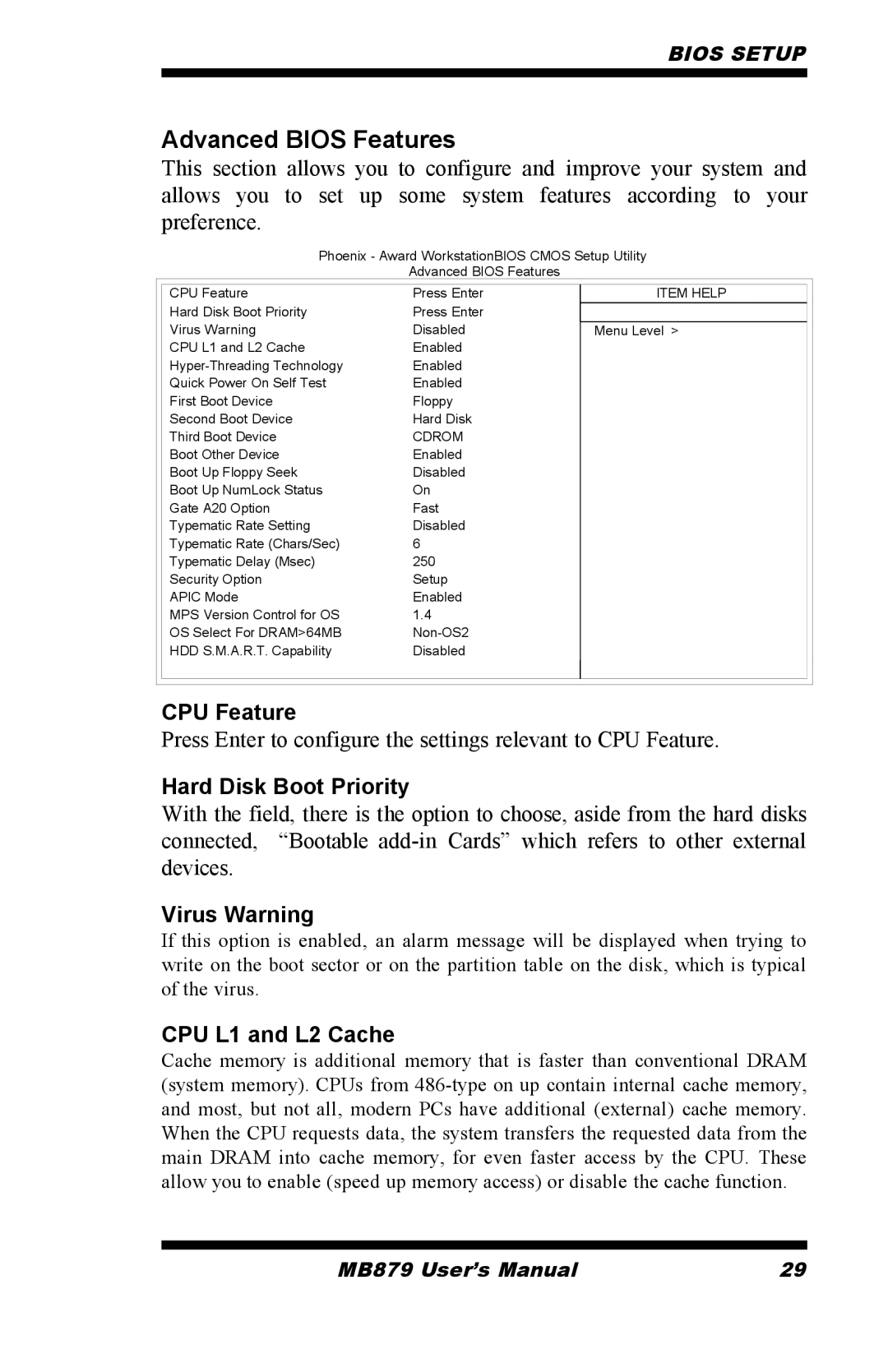MB879 specifications
The Intel MB879, a powerful microprocessor from Intel, is well-regarded within the realm of computing technology. As part of the Intel architecture family, it combines cutting-edge performance with advanced energy efficiency features, catering to a wide variety of applications from embedded systems to high-performance computing.One of the standout features of the Intel MB879 is its multi-core design. This allows for enhanced multitasking capabilities and improved performance in parallel processing environments. By distributing workloads across multiple cores, the MB879 ensures that applications, particularly those requiring intensive computational power, run smoothly and efficiently.
The processor is built on a robust 14nm manufacturing process, which contributes to its impressive performance per watt ratio. This inherent energy efficiency not only reduces operational costs but also aligns with the growing demand for greener computing solutions. The lower thermal output allows for quieter cooling solutions, making it suited for environments where noise levels are a concern.
Another significant characteristic of the Intel MB879 is its support for advanced memory technologies. With DDR4 memory support, it can handle greater bandwidth and efficiency, significantly improving data access speeds. This is particularly beneficial for memory-intensive applications such as database management and large-scale simulations.
Intel's integrated graphics technology is another notable feature of the MB879. The integrated GPU facilitates smooth graphic rendering without the need for a dedicated graphics card, making the processor suitable for light gaming and media playback while preserving system space and reducing power consumption.
Security is also a priority with the Intel MB879, which integrates advanced security features to protect data and enhance system integrity. Technologies like Intel Secure Boot and Intel Trusted Execution Technology help safeguard against various cyber threats, ensuring that sensitive information remains secure.
In conclusion, the Intel MB879 stands as a versatile and powerful microprocessor offering a blend of performance, efficiency, and security. With its multi-core architecture, advanced memory support, integrated graphics, and robust security features, it meets the demands of modern computing, from everyday applications to enterprise-level tasks, making it an excellent choice for developers and businesses alike.

